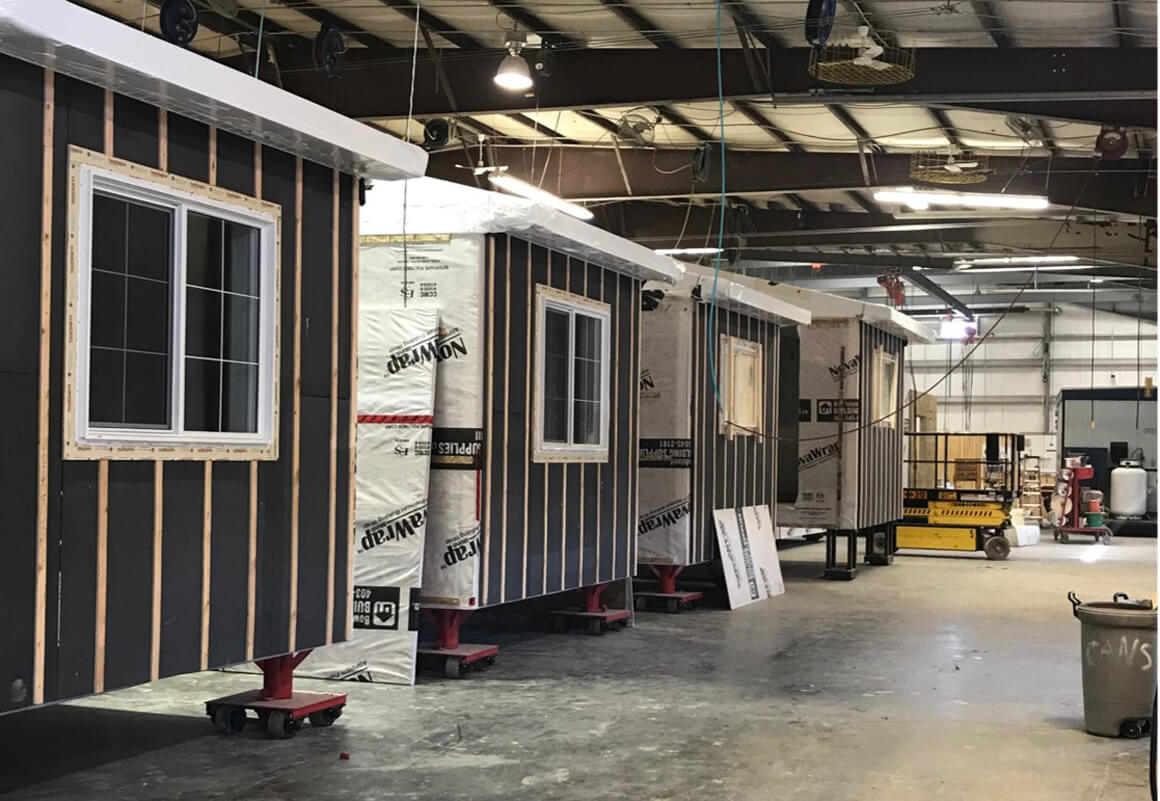Construction tech companies team up for Indigenous homebuilding initiative
ROC Modular and ZS2 are joining forces to provide high-performance Indigenous housing.

ROC Modular’s team work on housing units in a factory. – ROC Modular
Key Takeaways:
- The companies believe the rapid nature of modular housing and high-tech materials will get housing to communities much faster than traditional methods.
- The materials used are also designed for high thermal performance, meaning lower carbon footprints.
- Production on the homes for the initiative is expected to start this year.
The Whole Story:
ROC Modular Inc., a provider of offsite construction solutions, is partnering with building technology company ZS2 Technologies Ltd. to launch a new initiative that aims to get Indigenous and northern communities badly needed housing fast.
The initiative aims to take a modular approach to developping many housing units at a rapid rate. The team added that by using the latest proprietary material science from ZS2 Technologies, the homes will be more resistant to the elements, pests and mold.
Utilizing ZS2 Technologies proprietary TechBoard and TechPanels, the homes will also boast superior thermal performance, reducing the embodied carbon footprint of each home.
“More than ever the need for rapid and accessible housing is a critical need for communities across Canada,” said Scott Jenkins, ZS2 CEO and co-founder. “Together with ROC Modular, a true industry leader, we are offering a thoughtfully designed approach that combines modular construction with leading-edge materials based on low-carbon proprietary cement technology. This means not only highly resilient homes that can be rapidly deployed, but also houses that are highly efficient and healthier for the families that will call them home.”
“I am delighted that we can work with ZS2 Technologies to expedite rapid modular residential housing production and provide improved fire resistance, especially in a time of increased wildfire activity,” said Joe Kiss, ROC Modular president and CEO. “Our collaborative offering is uniquely positioned to provide sustainable homes with rapid and cost-effective delivery of much needed housing solutions. This will enable us to deliver a great solution that will provide long-term value to our customers while advancing the sustainability and safety of the off-site construction segment which continues to grow rapidly.”
The collaboration will begin with the construction of the new modular homes at ROC Modular Factory located in Bow Island, Alta., with production starting in 2023.
Here are some facts about Indigenous housing conditions from Statistics Canada:
- In 2021, more than one in six Indigenous people (17.1%) lived in crowded housing that was considered not suitable for the number of people who lived there.
- Indigenous people were almost twice as likely to live in crowded housing in 2021, compared with the non-Indigenous population (17.1% versus 9.4%). However, the gap between the Indigenous and non-Indigenous population narrowed by 1.7 percentage points from 2016 to 2021.
- Multigenerational households were the most common living arrangement among First Nations people living in crowded housing (34.5%), followed by couples living with children (21.7%). Among Métis and Inuit living in crowded housing, the most common living arrangement was couples living with children.
- In 2021, 16.4% of Indigenous people lived in a dwelling that was in need of major repairs.
